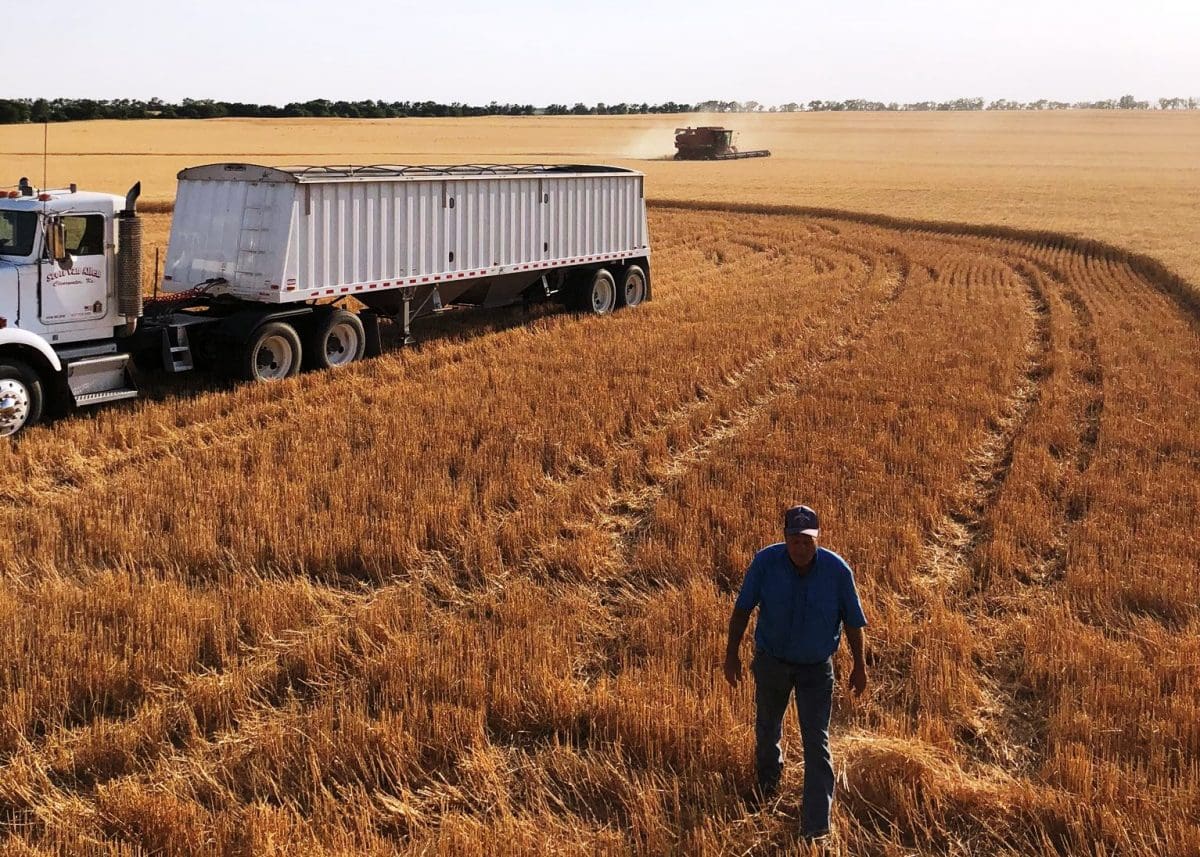
Harvesting wheat in Kansas in June. Photo: Lindsay van Allen
THE United States Department of Agriculture (USDA) has forecast world wheat production at 770.5 million tonnes (Mt), up 4.4Mt from its estimate released last month, which includes a 2.5Mt lift for the Australian crop to 28.5Mt and a 2Mt lift for Canada to 36Mt.
The figures were released on Friday in USDA’s September World Agricultural Supply and Demand Estimates (WASDE),
USDA is now forecasting global wheat ending stocks at 319.4Mt, up 2.6Mt from the August number, with China and India accounting for 51 and 10 per cent of the total respectively.
Its estimate for the EU wheat crop has risen 650,000t to 136.2Mt, while India is up 400,000t to 107.6Mt, and Argentina is down 1Mt to 19.5Mt,
Unchanged are China on 136Mt, Kazakhstan on 12.5Mt, Ukraine on 27Mt, the US on 50Mt, and Russia on 78Mt.
Projected 2020-21 (Jly-Jun) global trade wheat has lifted 1.5Mt to 189.4Mt on higher exports for Australia and Canada.
The largest import change this month is for China, where estimated imports are up 1Mt to 7Mt on an early strong pace of US sales and shipments to China, and increased exports from Australia and Canada.
If realised, these would be the largest China wheat imports since 1995-96.
Cut in coarse grains
USDA has cut its estimate for global coarse grain production to 1460.3Mt from 1464.7Mt seen last month, with a cut in US corn and sorghum estimates largely behind the drop.
Forecast US corn supplies are down from last month, with the smaller crop more than offsetting bigger opening stocks, mostly due to lower estimated exports for 2019-20.
The estimate for US corn used for ethanol in 2020-21 has been cut based on the continued slow recovery in motoring demand as a result of COVID-19,but expected exports have been raised to reflect reduced supplies in competitor countries.
This month’s 2020-21 non-US coarse grain outlook is for larger production, with fractionally higher trade and lower stocks relative to last month.
EU corn production is lowered, mostly reflecting a reduction for Romania, and Ukraine corn production is down, as acute short-term drought across much of the primary growing areas lowered corn yield prospects.
Corn production is raised for Brazil, as high domestic prices are expected to support an expansion in area.
Corn production is also increased for India and Nigeria.
Estimated barley production has been raised for Russia, the EU, and Australia.
Major global coarse grain trade changes for 2020-21 include barley export increases for Russia and Australia, and corn export forecasts have been raised for the US, Brazil and Mexico.
China’s corn feed and residual use for 2019-20 and 2020-21 has been raised from last month, based on observed soybean meal-equivalent protein consumption and current corn prices.
Foreign corn ending stocks are lower relative to last month, as increases for India and Nigeria are more than offset by a decline for China.
USDA’s estimate for China’s opening stocks of coarse grains have been cut by 3Mt this month to 201.4Mt, while its production is unchanged at 267.4Mt, and feed use is up 2Mt to 201.5Mt, and imports are unchanged at 18.45Mt.
The forecast for Argentina’s production is steady at 56.4Mt, while the Brazil number is up 3Mt to 113.4Mt.
Numbers neutral to bullish
In its analysis of the report, Lachstock Consulting said the market got what it was looking for on corn yield reductions, and further support had come from a reduction in the estimated of US harvested corn area.
However, the estimate for China’s corn imports at 7Mt is seen as very low given the amount of business being reported, and the trade is working on an amount of 15-20Mt.
Lachstock has called the corn and coarse grains figures neutral to bullish.
On soybeans, the US yield estimate was cut as expected, and no change was made to estimated Chinese imports.
With no changes to exports or the crush in the US, and a reduction in opening stocks, the report is seen as bullish for soybeans.
Lachstock has described the September WASDE as “pretty benign” for wheat.
Grain Central: Get our free daily cropping news straight to your inbox – Click here



HAVE YOUR SAY